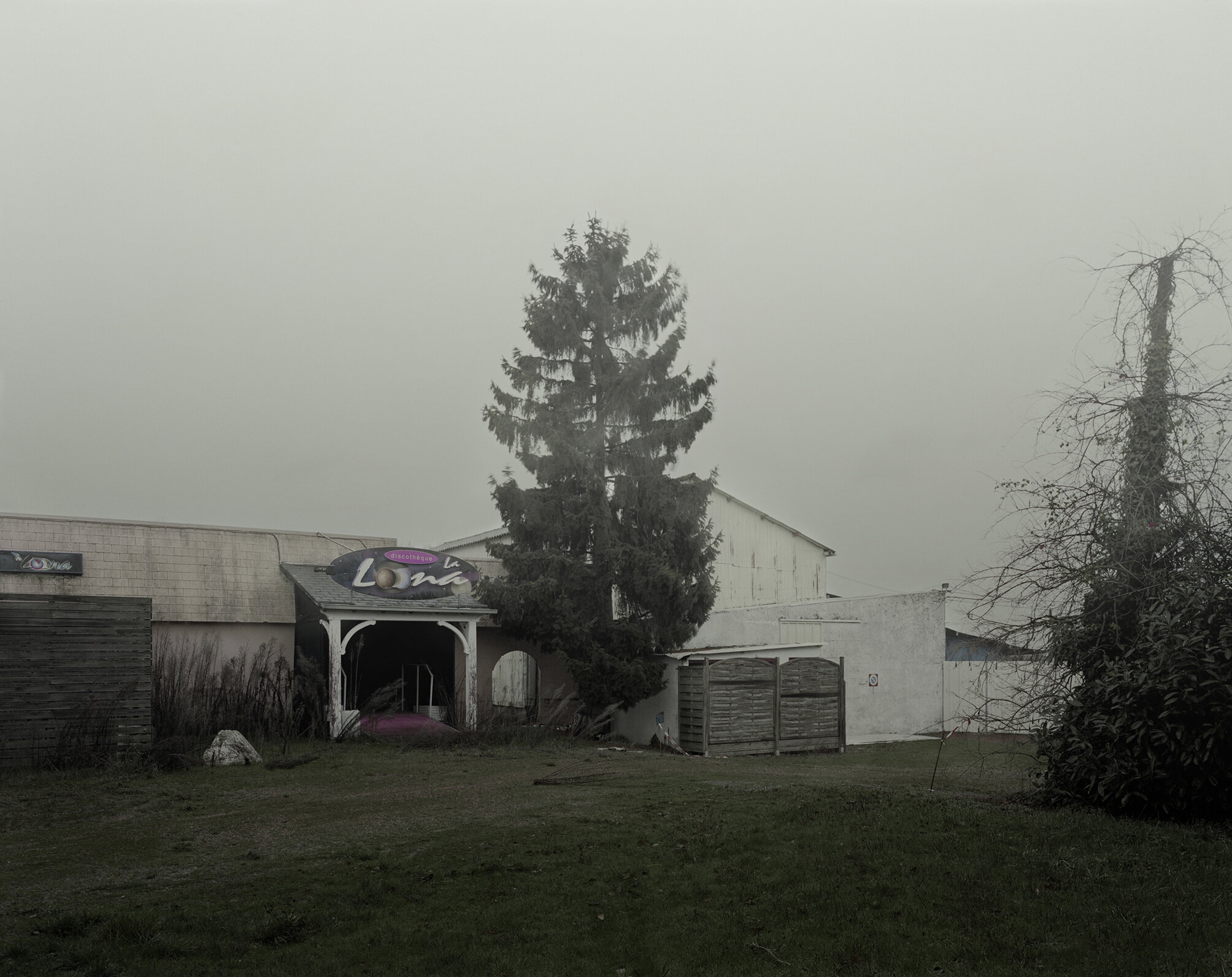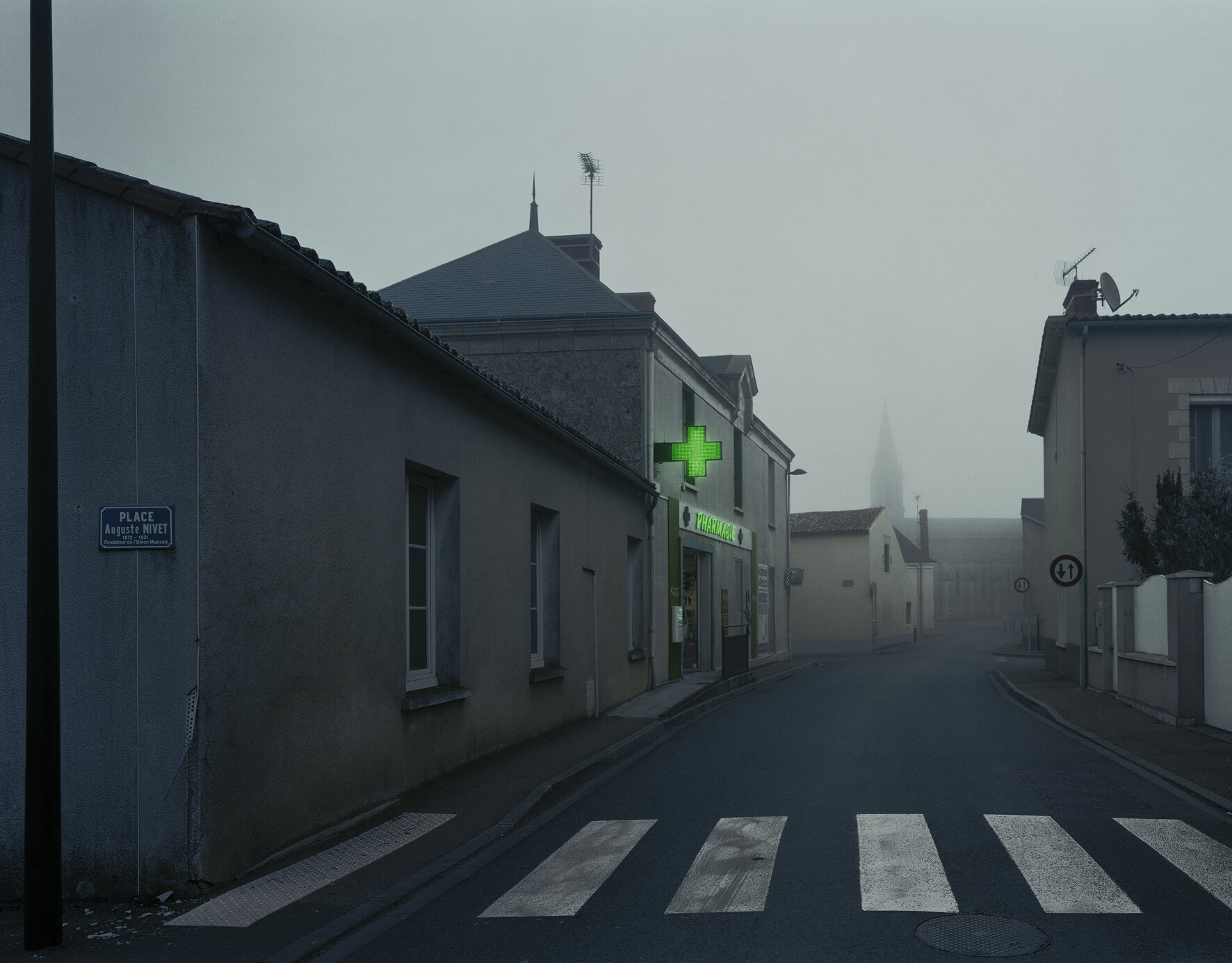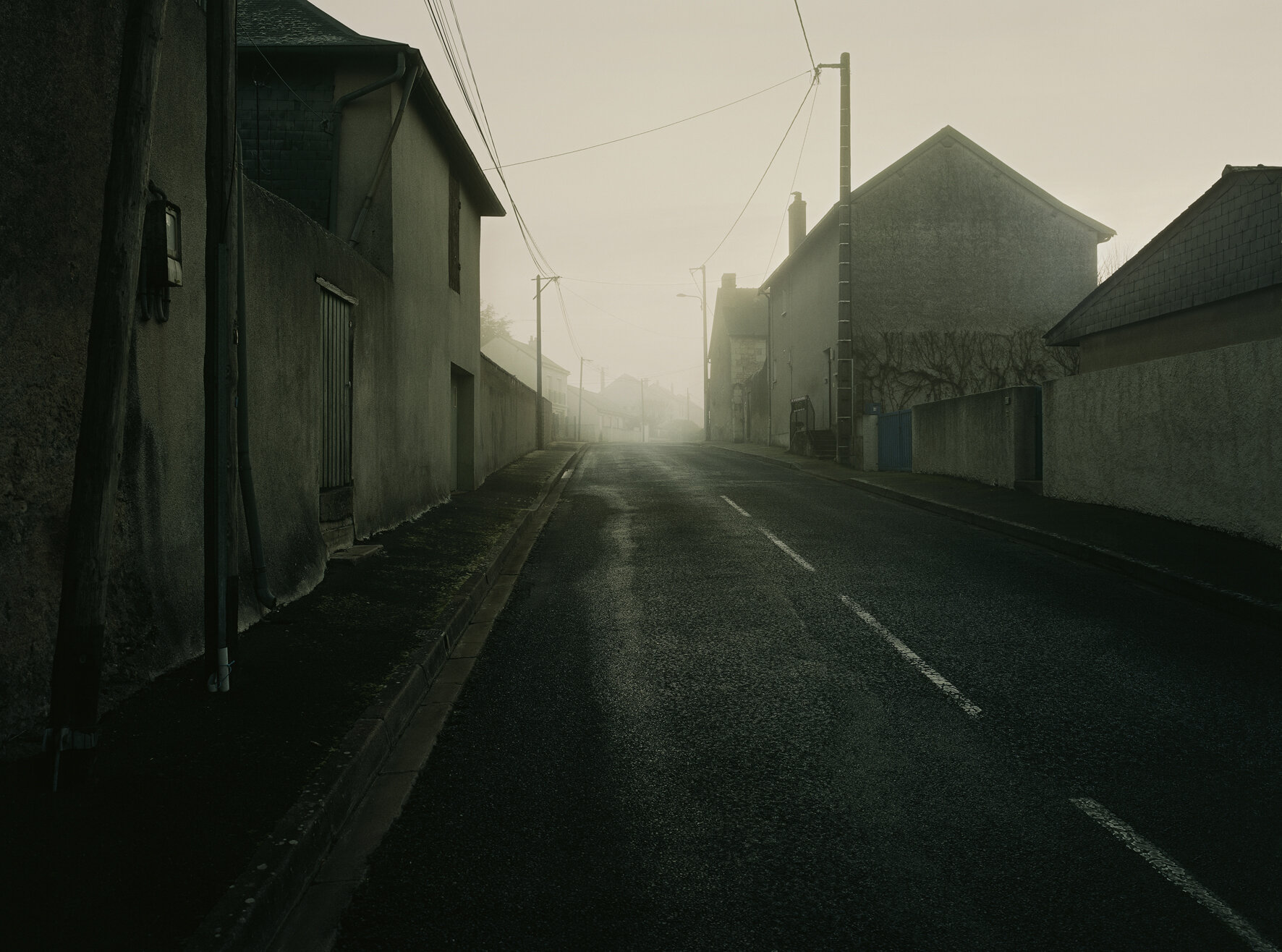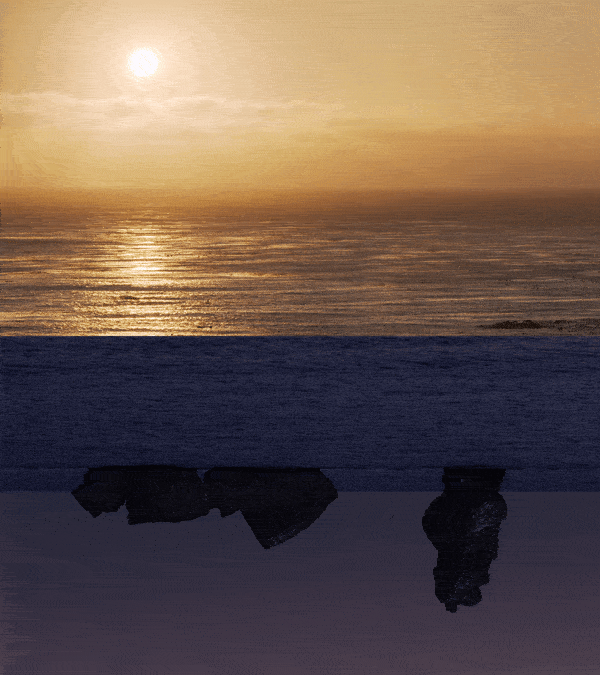DEAN MARSH PHOTOGRAPHY
I grew up in the North East of England and moved to London in 1989 to work as assistant to a well-known advertising photographer.After winning the still life section of the first ever Association of Photographers Assistants Awards in 1992, I set up my own photography studio in Clerkenwell in London, where I specialised in studio-based advertising photography.I now work as a prop master in the film and TV industry. I am currently working on a CBS TV series sequel to the 1976 David Bowie/Nic Roeg film The Man Who Fell to Earth.
Photography for me is now merely for personal pleasure; I do aim to have an exhibition (and possibly a book) of a project I’ve been working on for the last few years about deserted townscapes/landscapes in the Deux-Sèvres region of France, all shot on my Sinar P2 4x5 camera.
your greatest inspirations or influences?
My first influences in photography were the encyclopedias I had as a child, full of landscape/cityscape photographs of the American West, old Gold Rush towns, vast oil fields and the like. I used to pore over these images and imagine the lives of the people who lived there; dreaming of someday visiting these places myself to take my own photographs.
Ansel Adams; his large format images of Yosemite National Park are still some of my favourites. The level of detail he achieved through use of his famed zone system is astounding.
For a while I had an ambition to be a reportage photographer and the work of the great Don McCullin was something I aspired. I met him once in the film suppliers I use in London, a very quiet and unassuming man. After I read his book ‘Unreasonable Behaviour’ I decide that photojournalism wasn’t for me.
Joel Sternfeld has also been a big influence on me; his book 'American Prospects’ is a work of genius.
Tell us a bit about your creative process?
I shoot only on my large format Sinar P2 camera, always with my 90mm Schneider-Kreuznach super angulon lens. I have had this for about thirty years now.
As 4x5 instant film is no longer available, I use my compact digital camera as a metering device, adding an extra stop to the exposure from the meter reading.
I shoot on the superfine grain Kodak Ektar 100 colour film and then scan on a Hasselblad Flextight scanner.
I tend to scout locations long before shooting them, to check where the sun rises and sets etc. Because large format film and processing is so expensive now (works out at about £12 per shot to buy and develop), I think very carefully about the images I make. Occasionally I do stumble across a scene that I end up shooting there and then. I have been thinking of changing to digital photography, but I do love the process and discipline of handling a large format camera; you really do have to consider exactly what you are doing before pressing that shutter release.
As mentioned above, I am currently collating a series of images that I have been working on for the last few years; scenes of abandoned/deserted buildings and spaces and empty streets etc in the small towns and villages of the Deux-Sèvres region of France. I had hoped to have had an exhibition by now, but other work commitments and the current situation with Covid-19 has put this on hold for a while. As soon as I finish the TV show I’m working on I will put my energy into finally sorting this.
The exhibition will be called ‘Vive Vide’ - this is a play on words; ‘vive’ usually means ‘long live’, but can also mean ‘lively’, and ‘vide’ can mean both ‘empty’ or ‘emptiness’.
The Deux-Sèvres area of France is very sparsely populated and you can drive through three or four small villages, one after the other, without seeing a single person. There are also lots of abandoned buildings and open spaces in this area, many left empty and untouched for years.
Rather than getting up close and documenting the lives of people in these places, I prefer to imagine lives lived behind the closed doors and empty streets - something that harks back to those images I used to find so beguiling in my childhood encyclopedias.
How has this year changed your creativity or how you see the world changing moving forward?
Obviously, with the various lockdowns I have not been able to travel to France to finish my project - the last time I was there was in December 2020. Who knows what the future holds for travel and work etc?
These are very troubled and worrying times, but hopefully we will pull through and life will return to normal before too long.
Who do you consider to be an icon of our time?
I don’t really look to anyone in particular and regard them as “iconic". if I had to choose one living person from the world of art (photography in particular) - who is still active within their profession - as being someone whom I admire more than any other it would probably be the British photographer Tim Simmons. I love his work. I met him when I first moved to London when I was looking for assisting work. He has moved on from commercial photography too and his large format landscapes are stunning.
Do you think the art world needs to change, and if so how do you feel it can improve?
I’m not sure what is the answer to this. I do know that I believe people like Charles Saatchi are/have been a caustic influence on the perceived value of art.
What does wellbeing mean to you?
Being up before dawn and heading out into the French countryside with my camera; waiting for the sun to rise over some eerily quiet street or deserted landscape and feeling that the effort was worth it - then heading home for a croque monsieur, a strong coffee and a nap.









